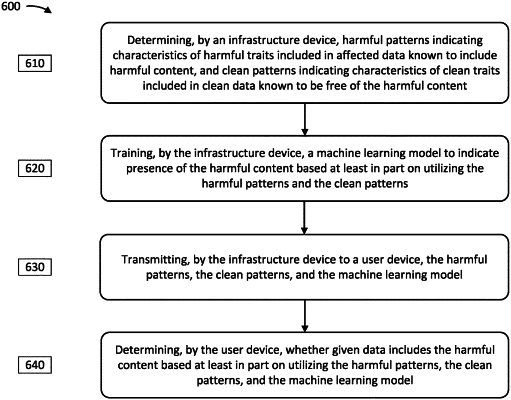| CPC H04L 63/1416 (2013.01) [H04L 63/145 (2013.01)] | 20 Claims |

|
1. A method, comprising:
mixing, by an infrastructure device, harmful traits and clean traits to determine a mixed set of the harmful traits and the clean traits, the harmful traits being identified based at least in part on analyzing affected data known to include harmful content and the clean traits being identified based at least in part on analyzing clean data known to be free of the harmful content;
determining, by the infrastructure device, harmful patterns indicating characteristics of the harmful traits based at least in part on comparing the affected data with the mixed set of the harmful traits and the clean traits, and clean patterns indicating characteristics of the clean traits based at least in part on comparing the clean data with the mixed set of the harmful traits and the clean traits, wherein a harmful pattern, from among the harmful patterns, includes a combination of harmful traits and clean traits;
training, by the infrastructure device, a machine learning model to indicate presence of the harmful content based at least in part on utilizing the harmful patterns and the clean patterns;
transmitting, by the infrastructure device to a user device, the harmful patterns, the clean patterns, and the machine learning model; and
determining, by the user device, whether given data includes the harmful content based at least in part on utilizing the harmful patterns, the clean patterns, and the machine learning model.
|